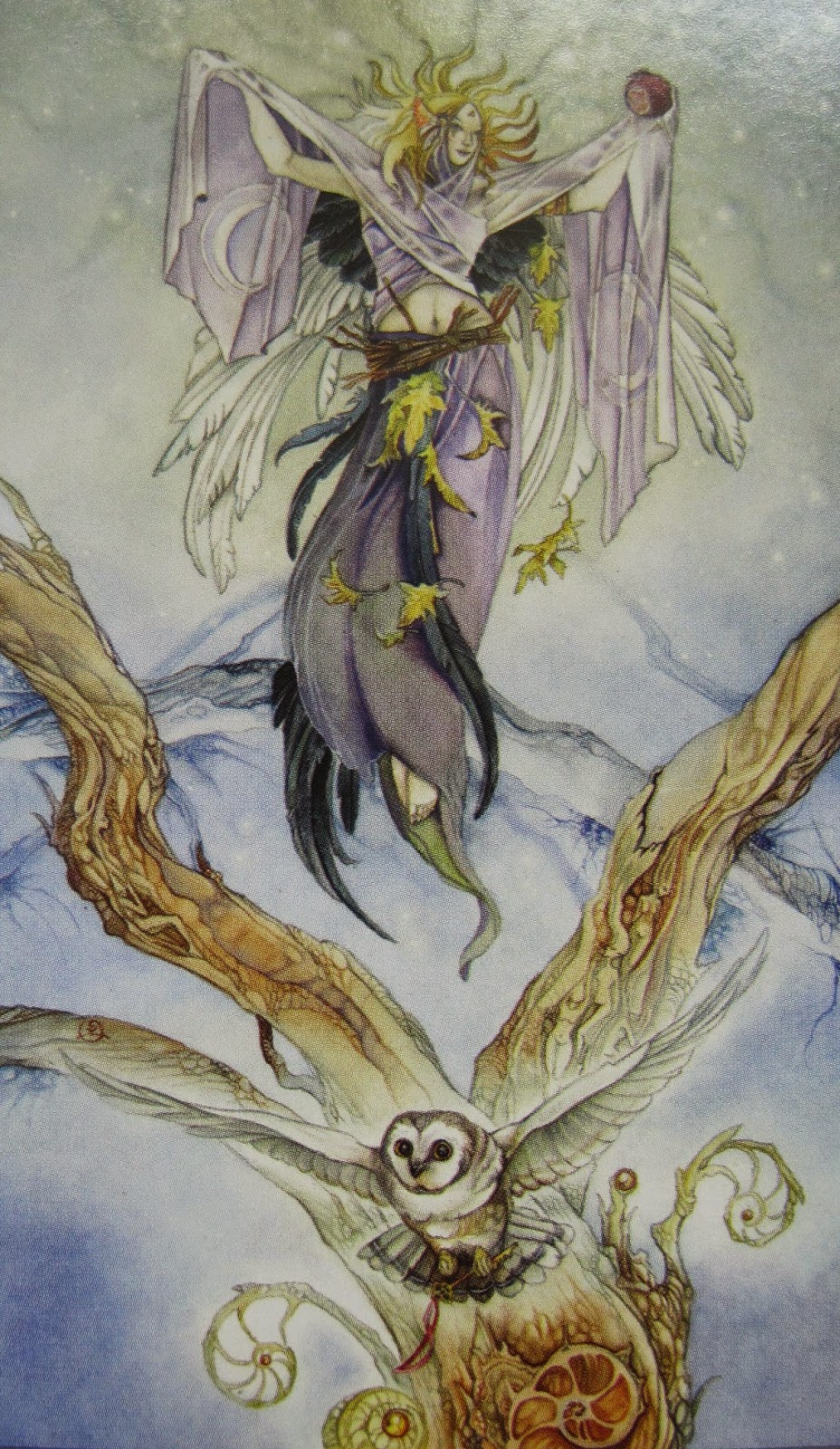The ruler of Cancer is the Moon, so I thought it might be
fun to have a quick look at the card in the tarot that’s associated with it.
It’s not the Moon card, as you might imagine - that corresponds to Pisces - but
the High Priestess.
 |
| Universal Waite Tarot |
When we think of the High Priestess, we think of mystery,
the unconscious, wisdom, intuition, inner guides – all of which come under the
auspices of the Moon. In many depictions
of the Priestess, we see a crescent Moon – something new starting to grow deep
in the unconscious, that we may not be fully aware of at a conscious level, the
New Moon representing unrealized potential.
That depth of feeling feeds into all of the cards associated with the
sign of Cancer.
Traditional depictions of the High Priestess show her
sitting between two pillars, often – but not always – black and white,
symbolizing her role as bringing together opposites. She carries the number ‘2’
in the Major Arcana, reminding us not only of the early stages, the newness of
the Fool’s Journey, but also that duality.
She acts as a conduit between the conscious and unconscious – the
creativity and intuition that can link the two realms.
She sits in front of a curtain or veil, behind which can
sometimes be seen water, symbolizing the unknown – the mystery. The High Priestess represents our intuition,
something long linked with the Moon – the need to trust our instincts, to look
inwards for answers, rather than to the outer world. The Moon has come to symbolize the feminine,
as well as psychic energy. Through the
Moon’s rulership of Cancer, a water sign, we see the links between the
formlessness of water and the shapeless unconscious.
 |
| Shadowscapes Tarot |
We see the moon depicted in its various phases on the robe of the Shadowscapes' Priestess. She hovers in the sky
beneath two brances of a tree, not unlike the twin pillars of the more
traditional Rider-Waite-based images.Below
her flies an owl, symbolizing wisdom. The High Priestess carries a
pomegranate, a symbol of both the mysteries of birth and death (through the myth of
Persephone).
The High Priestess often holds a scroll, which in some decks
carries the letters ‘TORA’. Unlike the
Jewish Torah, which is unrolled every Sabbath in order to read its wisdom, the
High Priestess’ scroll remains rolled up, keeping its secrets. To uncover them, we have to reach within; we
have to learn to listen to our intuition in order to unearth the truth.
 |
| Thoth Tarot |
In both the Thoth and the Haindl decks, we see the Hebrew
letter ‘gimel’, meaning camel – in fact, at the bottom of the Thoth’s High
Priestess, a camel appears. This represents the idea of emotional
self-sufficiency, the Moon being all about our emotional needs. Like the camel, which can go long distances
without additional water, we contain the resources – the ‘fertile oases’
depicted at the bottom of the card - within us that are needed to sustain us on
an emotional level.
 |
| Haindl Tarot |
The Haindl’s version of the High Priestess also shows us the
rune ‘Ur’, meaning ‘aurochs’ as well as ‘rain’.
The aurochs, an extinct European bison, reminds us that both the buffalo
and the cow have been symbols for the goddess in many cultures – the
feminine...bringing us back to the Moon again.
The crescent Moon is often seen reflected in the shape of the horns.
‘Ur’ is also known as the rune of secret passage – the flow
of intuition between those two pillars seen in the more traditional images of
the High Priestess – and can also mean ancient, primal. Again, the High
Priestess takes us deeper, to an instinctive level, leaving the conditioning of
the conscious world on the other side of the veil.
Haindl
Tarot created by Hermann Haindl,
published by US Games
Systems, Inc.
Shadowscapes Tarot created by Stephanie Pui-Mun Law and Barbara Moore, published by
Llewellyn
Thoth Tarot created by Aleister
Crowley, illustrated by Lady Frieda Harris, published by US Games Systems, Inc.
Universal Waite Tarot created by Mary Hanson-Roberts & Pamela
Colman-Smith, published by US Games Systems, Inc.
No comments:
Post a Comment
Note: only a member of this blog may post a comment.